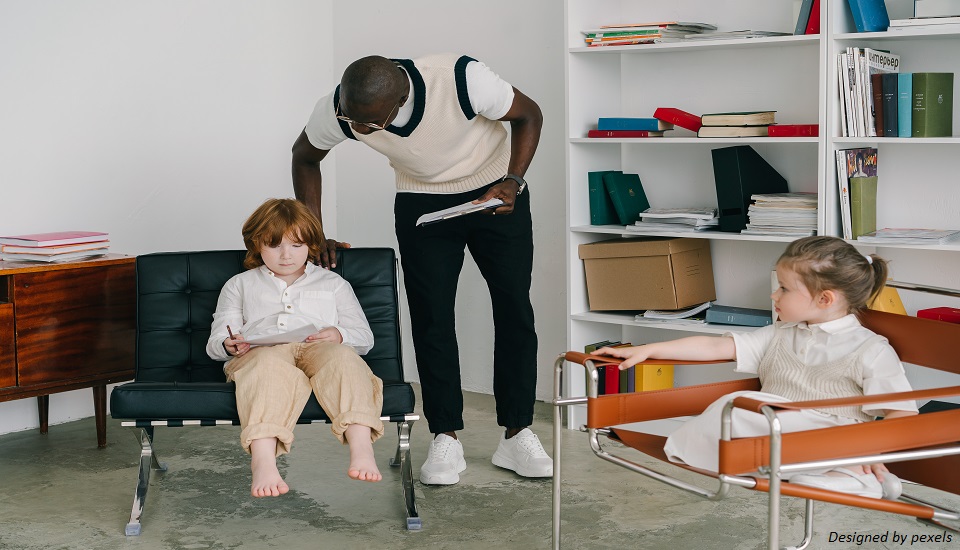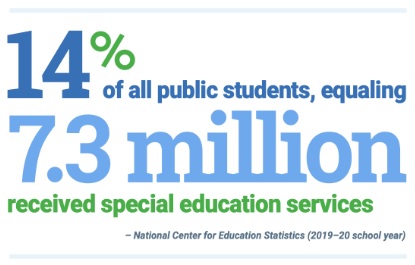
Creating Inclusivity in the Classroom: Tips for Gen Ed and Special Ed Teachers
25th April 2023
Many educators overlook the fact that creating an inclusive environment for all the students in the classroom irrespective of their caste, religion, creed, physical or mental condition is one of the most important factors in becoming successful gen ed teachers or special ed teachers.
Inclusive education becomes more important when there’s special education students are also there in the general public school. The responsibility of every teacher whether it’s gen ed teachers or special ed teachers will get increased to involve special education need students.
According to wested.org, 14% of public students are receiving special education services, which means teachers' focus is on the right direction.

However, there’s more needed from both gen ed teachers and special education teachers to bring inclusiveness to the public school, with our blog post, you will get to know everything about creating a supportive environment for special education students and what steps should teachers take for it.
In addition, we also recommend helping and understanding better children with special needs, every general ed teacher, or even parents could go through our online autism courses, which are filled with teaching techniques for your special young learners better.
Now without any further ado, let’s deep-dive into this topic.
General Idea of Inclusion in the Classroom
Inclusion refers to the idea of ensuring that every student has access to the same opportunities and experiences, regardless of their abilities or disabilities. The inclusive classroom model has been shown to improve academic and social outcomes for all students. Students with disabilities who are in higher education are more likely to have better academic performance and social skills than students who are not.
Likewise, general education students benefit from inclusion by developing empathy, understanding, and acceptance of people who are different from them.
Understanding the Needs of special education students
In order to promote effective inclusion, it is necessary to understand the needs of special education students. Students with disabilities may have different needs depending on their abilities, barriers, and diagnoses. Some students may need physical accommodations such as adaptive equipment, while others may need emotional and behavioural support.
It is important to work with the student's Individualized Education Program (IEP) team to understand their needs and develop appropriate strategies for enhancing interaction with the next generation of students.
Strategies for Encouraging Interactions between Gen Ed Students and Ed Special Students
Here are some strategies that special education teachers can use to help gen Ed students interact with special students:
1. Help Gen Ed Students Interact with Special Ed Students
It's essential to provide opportunities for gen ed students to interact with special ed students. You can plan activities that allow students to work together, such as group projects or peer mentoring programs. These activities can help break down barriers and promote understanding and acceptance between students.
2. Educate Gen Ed Students about Special Ed Students
Gen ed students may have misconceptions or misunderstandings about special ed students. It's essential to provide education about disabilities and special needs to promote acceptance and understanding. You can hold classroom discussions or invite guest speakers to talk about disabilities and how to interact with special ed students respectfully.
3. Become a Role Model on How to Behave with Special Ed Students
As a special education teacher, you can model appropriate behaviour when interacting with special ed students. You can show gen ed students how to communicate effectively and respectfully with their peers with disabilities. You can also demonstrate how to provide assistance and support to students with disabilities without taking over or doing things for them.
4. Pair up General Ed and Special Ed Students When Possible
Pairing up gen ed and special ed students can be an effective way to promote interaction and build relationships. You can pair students up for classroom activities or assign a peer mentor to a student with a disability. These pairings can help build trust and understanding between students and promote acceptance and inclusion.
Creating a Supportive Classroom Environment for All Students
Creating a supportive classroom environment is essential for inclusion and interaction between gen ed and special ed students. Here are some strategies special education teachers can use to create a supportive classroom environment for all students:
1. Set Clear Expectations and Rules:
Setting clear expectations and rules can help a safe and structured learning environment is created. You can work with your students to create a classroom policy that outlines expectations for behaviour and communication. These rules can help foster respect, understanding, and acceptance for all students.
2. Provide Required Support:
Students with disabilities may need emotional and behavioural support to be successful in the classroom. You can provide this support by working with school counsellors or social workers to develop strategies for managing attitudes and emotions. You can also provide a safe place for students to relax or calm down when needed.
3. Use Assistive Technology and Adaptive Equipment
Assistive technology and adaptive equipment can help students with disabilities access the curriculum and participate in classroom activities. You can work with the school's technology team to ensure that students have access to appropriate technology and equipment. This can help promote independence and inclusion for students with disabilities.
Tips for Effective Communication between Gen Ed and Special Ed Teachers
Effective communication between gen ed and special ed teachers is essential to promoting inclusion and supporting the needs of all students. The following are some tips for effective communication between gen ed and special ed teachers:
1. Share Information about Students
Sharing information about students can help ensure that all teachers are aware of their needs and accommodations. You can use a shared folder or database to store student information, such as IEPs, behaviour plans, and medical information. This can help ensure that all teachers are on the same page and can provide appropriate support to students.
2. Collaborate on Lesson Planning
Collaborating on lesson planning can help ensure that all students are included and have access to the curriculum. You can work with gen ed teachers to modify lessons and activities to meet the needs of students with disabilities. This can help promote inclusion and ensure that all students are challenged and engaged.
3. Attend Meetings and Professional Development Together
Attending meetings and professional development together can help ensure that all teachers are on the same page and working towards the same goals. You can attend IEP meetings or other meetings together to discuss student needs and accommodations. You can also attend professional development workshops together to learn new strategies and techniques for promoting inclusion and supporting the needs of all students.
Teach Gen Ed Students to Accept and Understand Special Ed Students
Encouraging inclusion and interaction between gen ed and special ed students is very important to creating a supportive and inclusive learning environment. Special education teachers can use the techniques described in this blog post, to help gen ed students interact with special education students respectfully and effectively.
Creating a supportive classroom environment and encouraging effective communication between other general teachers also, ensures that all students receive the same opportunities and experiences.
Every teacher needs to work together and need to teach gen ed students to accept and understand special ed students and promote inclusion in classrooms, then only a supporting and safe environment for special ed students will get created. Additionally, you can also take help from our online autism courses, to know more teaching techniques to help them better.
Written By : Laura Taylor




